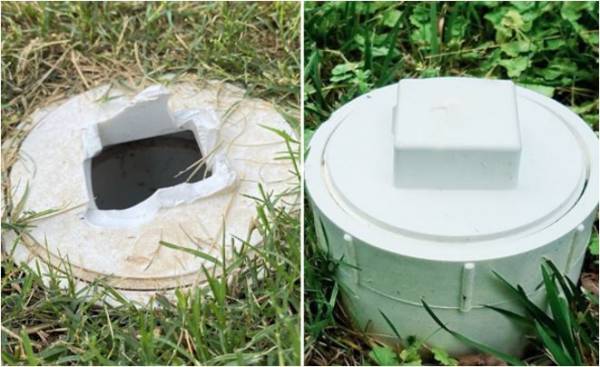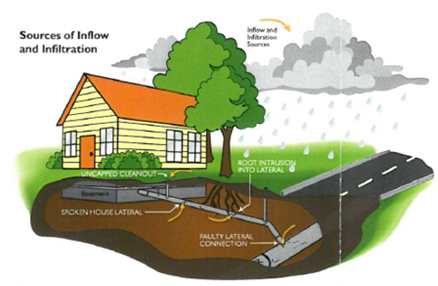Preventing Costly Sewer Backups
Understanding Sewer Backups
A sewer backup occurs when wastewater is unable to flow freely through the sewer lines, causing it to reverse its course and enter your property through drains, toilets, or other plumbing fixtures. This can lead to potentially serious and unpleasant consequences, impacting both your property and our public sewer system.
Causes of Sewer Backups:
- Blockages: Objects, debris, or grease buildup in the sewer lines can obstruct the normal flow of wastewater, leading to backups.
- Tree Roots: Tree roots seeking moisture and nutrients can infiltrate sewer pipes, causing blockages and structural damage.
- System Overload: During heavy rainfall or excessive water use, the sewer system may become overloaded, resulting in backups.
Did you know?
- Backups often occur in basements, but can happen anywhere in the home, potentially damaging other systems.
- Typical homeowners’ insurance does not always cover backups in sewers and drains.
- If the source of the backup, such as a clog or a break, is found in the private lateral, the costs for the cleanup and restoration are paid by the property owner.
Private Sewer Laterals – Property Owner’s Responsibility
- This four-inch service line/pipe connects a home or business’ plumbing to CCWA’s sanitary sewer system.
- Property owners own the lateral up to the point of connection to CCWA’s sewer main and are responsible for all maintenance.
Public Sewer Laterals – CCWA’s Responsibility
- This six-inch service line/pipe is located inside the public right-of-way, or in an easement issued to CCWA, and carries wastewater to CCWA’s treatment facilities.
- CCWA owns, and has responsibilities for the maintenance of, the six-inch service line/pipe.
Sewer Lateral Cleanout – Keep it Accessible
- This cleanout provides access to the lateral for maintenance, clearing blockages and repair.

- CCWA requires a cleanout on all laterals located near right of way but may also require an additional cleanout at the building.
- Broken cleanout caps can let stormwater in and lead to an overflow.

Functioning laterals protect your family, your property, and our drinking water
Regular lateral inspections are the key to preventing costly sewer backups. Plumbers/maintenance contractors can televise or ‘tv’ a line to see any issues. Improved inspection technology, including sonar, has reduced repair prices.
Upstream Manholes
If your lowest plumbing fixture, such as a basement toilet or sink, is below the next upstream manhole, then you must have a sanitary backflow device on your lateral. If raw sewage backs up at the upstream manhole, the device closes and protects your property from flooding. Without a sanitary backflow device, the property owner is responsible for any damages and cleanup if there is a sewage backup. As illustrated in the photo, the blockage formed from the connection (where the customer’s 4-inch connects with CCWA’s 6-inch lateral) and caused a backup into the residence.
Protecting Yourself from Costly Sewage Backups
- Locate your lateral cleanout and make sure the cap is in good condition.
- Repair or replace damaged laterals and cleanouts. Replacement caps may be purchased at a home improvement store.
- Have your private lateral inspected by a licensed plumber.
- Don’t plant trees or shrubs with deep roots close to your private lateral.
- If purchasing a house, include the lateral inspection in the home inspection.
- Install a sanitary backflow device if your lowest plumbing fixture is below grade of an upstream manhole.
Getting It Fixed
- CCWA field staff can only inspect from the cleanout to the main sewer and cannot work on private property.
- Property owners are responsible for repair/replacement if an inspection reveals damage or failure of the connection.
- ‘No dig’ or trenchless technologies minimize above ground disturbance which is less costly than digging and can keep landscape intact.
For more information, contact us at 770-960-5200.

